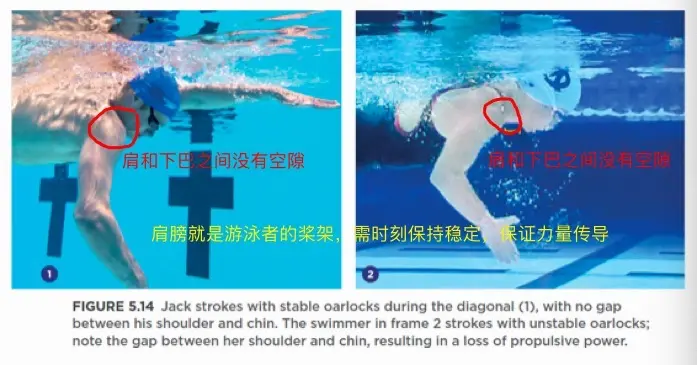写在前面: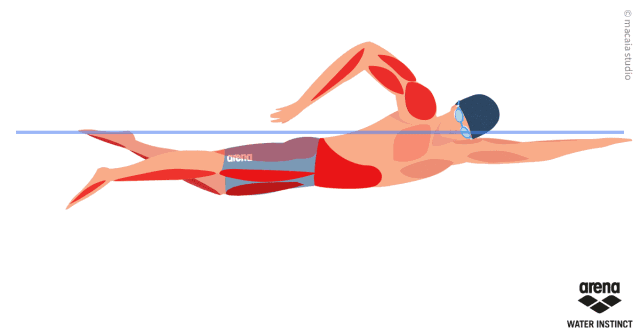
如果你对游泳,特别是自由泳感兴趣,非常推荐你去看一本书,叫做“Swim Speed Secrets”。里面有很多拆解的技巧简直实用爆棚,其中对我影响最大的一个tips可能就是要充分转体,转得越大越轻松越好,换气前先在水下吐气,出水就可以直接吸气了。
这本书的作者是Sheila Taromina,四届奥运会选手,金牌获得者,铁人三项世界冠军,游泳教练,第一个同时获得三项奥运项目资格的女运动员。这位女运动员虽然身高只有160cm,但却凭借自己的技巧和对游泳的理解,取得了不俗的成绩。

初次得知这本书是来自外国一个运动博主的视频,他在学习这本书后取得了转折性的进步,亚马逊也是好评如潮。
这本书的特点是通俗易懂,非常具有实用性,读完之后,在学习其他技巧性的运动时也会有所收获,虽然这本书的受众群是想要提升自由泳效率和速度的运动员,但我觉得新手阅读完全没有太大障碍,不管是多是少,每次阅读可能都会有新的收获。接下来,我就摘录一些书中我认为对提升自由泳水平比较有价值和有帮助的内容。
游得好不好,技巧占据80%
Technique is 80 percent of swimming when lined up next to strength, conditioning, or the size of a swimmer.
(和其他运动不同,游泳中最重要的不是一个人的力量,体型,环境,而是技巧)
不要花太多精力追求流线型
作者在和顶级游泳运动员聊天中问对方,你一直在追求什么?对方答到我要游得像从一个细长的管子里穿过去那样。似乎每个人都在往这个方向努力,追求流线型,减少阻力…而作者认为想要游得更快应该更加重视Pull(抓水和推水的过程),并且以各种风趣幽默的语言和实例佐证了这一点。
1.“Our pull dictates both the number of strokes we take and the rate at which we take those strokes. ”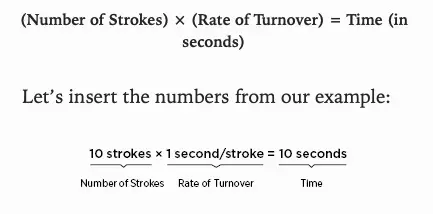
2.“Think about the physical attributes of great swimmers. What is the most distinctive look of their bodies? It is the shoulders and the lat muscles; they have broad shoulders and distinctive V-shaped bodies, right? ”
游泳运动员大多具有宽阔的肩膀和强壮的背阔肌,这些难道是整天在做转体和伸展训练所能取得的?
对于怎样推水更有效,不同年代有不同观点,最早是直推式(straight-back),还有一种是带弧度的“S”型推水,语言描述难免会有局限,游泳教练Ernie Maglischo的一句话描述更加准确:
“Swimmers should push predominantly back on the water as they stroke diagonally (对角线地)through it.”
两种推水的对比: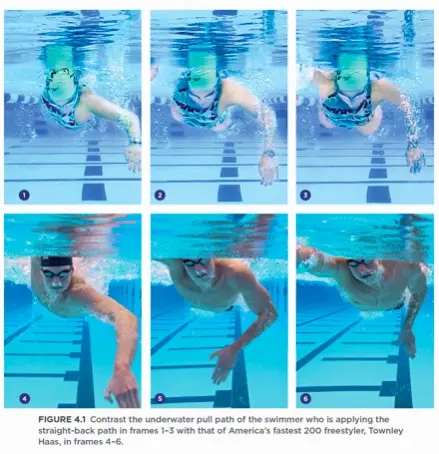
抓水与钟摆
抓水(catch)时上臂的变化,观察这些运动员抓水的姿势你会发现他们都有这些细节:
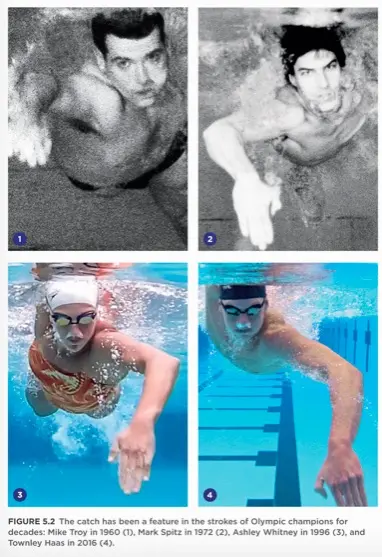
“Press the scapula forward.
Medially rotate the upper arm.
Bend the elbow to achieve proper hand depth.
Sweep the upper arm outside of shoulder width.”
-将肩胛骨往前压(不知道肩胛骨位置就把胳膊举起来拂脸,带动胳膊的肌肉就是)
-上臂内旋(实现高肘位)
-弯曲肘部以达到适当的手的深度
-把上臂扫到比肩稍宽的地方
关于抓水的时候,很多人习惯的用力把前臂和手往下压是不对的,书中引用了Johnny Weissmuller的对抓水的描述,可谓说非常形象了。
“ “The upper arm should be raised, the elbow pointing upward to permit the forearm to hang down almost perpendicularly, and then go forward on a sort of pendulum swing” (Weissmuller 1930, 15)”
不妨把这个动作想象成一个钟摆。
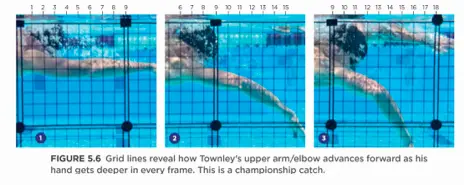
下附图片是两个奥运选手做抓手动作的对比,可以看出第一个是先追求深度,再追求宽度;第二个是先追求宽度,再追求深度,这两种效果都是一样的。
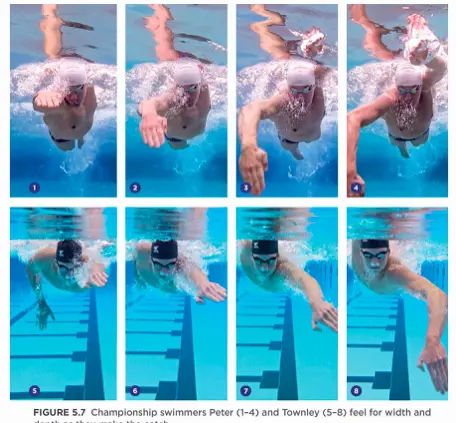
推水与赛艇的“桨架”
推水,是自由泳的发力期(power phase),也是产生推进力的关键阶段。
1.关于这个阶段的推水路线,作者给出的描绘性词语是“the diagonal”,查字典你会发现它是“斜线,对角线”的意思。这说明在推水发起时, 前臂与水面呈现的角度是45度的。
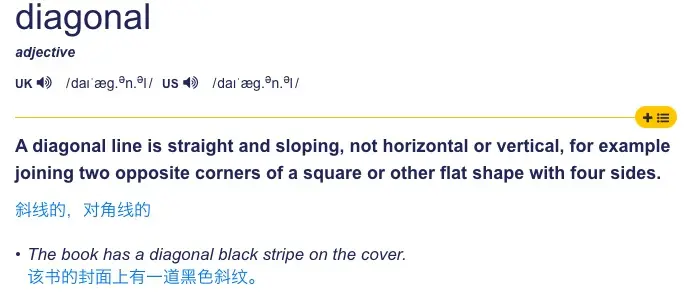
“when done correctly, the upper arm changes articulation and positions at an angle approximately 45 degrees in relation to the surface of the water.”
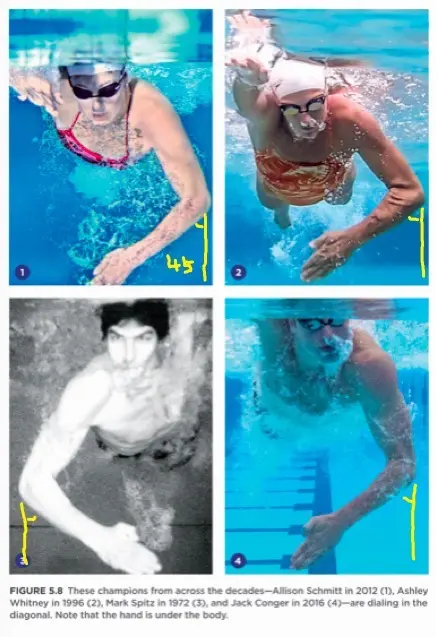 45度推水角度
45度推水角度
2.推水到哪个位置为止呢?作者给出的是臀部和肚脐之间。
“You are within elite parameters if your hand ends up somewhere under your body between your hip and belly button.”
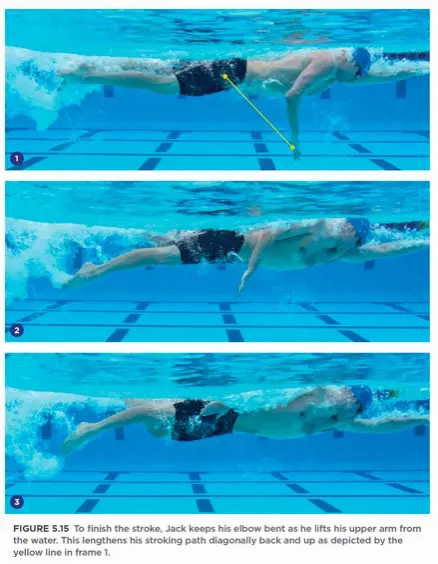
3.最为关键的地方来了,Sheila认为优秀的游泳选手的肩膀和下巴之间是没有空隙的,因为就像赛艇的浆架,给船桨提供了一个支点,支撑着赛艇前进。她还举了一个例子,在单车比赛中,优秀的选手是不会让屁股上上下下移动的,而是将它作为一个静止不动的支点,把动力传达给踏板之上,而不是通过上下移动的屁股而分散掉了。这给我们的启示是在推水的过程中也要保持肩胛骨的稳固,不要将其往后拉。
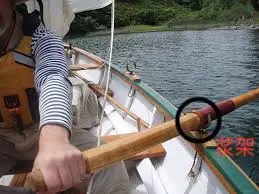
In order to ensure stable oarlocks during the propulsive arm stroking motion, make sure that you maintain a shrug in your shoulder during the diagonal phase of the stroke. The key to this is maintaining scapular stability. Do not pull the scapula back. The upper arm pivots and sweeps inside the joint as the scapula—and hence the shoulder—remains forward and stable.
换气先转体
有时去游泳馆,你会时不时看到有些游自由泳的人换气的时候 头像鱼跃龙门,整个像跳脱了出来,非常有喜感。游得好坏不说,还有扭伤脑袋的风险。Sheila在书中说正确的换气是伴随着转体的换气,是“转头换气”哦,而不是像蛙泳一样“抬头换气”!
“To take a breath, a swimmer not only turns the head to the side but also rotates the body further to the side than on the non-breathing strokes. This slightly off-balance rotation is necessary to get the breath. The best of the best do something very sophisticated though. After they take in air, they turn their head back into the water and re-balance on the axis line while feeling for the catch. Other swimmers pull through while they’re still tipped slightly off balance, which causes a loss of distance traveled on that arm stroke. It may be a minimal loss on one given stroke, but the strokes add up over the course of a race.”
从这段文字描述我们可以得知,转体换气不可避免地导致身体偏向一方,身体会产生不平衡,但只有这样才能高效地换到气,换到气后再迅速偏转回来恢复平衡。她还提到一定要等到身子恢复平衡,轴心稳定了再划水,这样会划得更远。毕竟赛道上是争分夺秒的嘛。
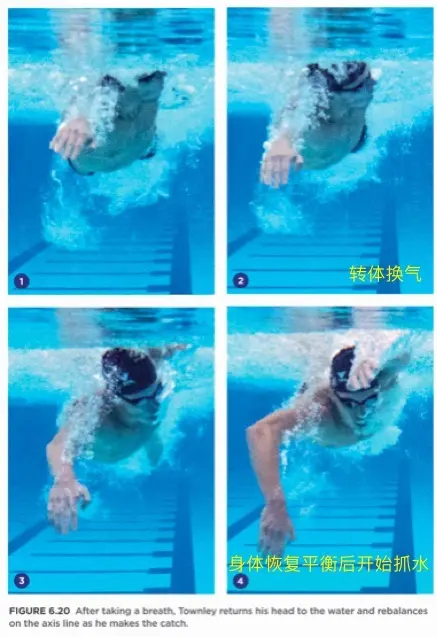
另外一个关于换气的小技巧是,随时保持下巴贴紧胸前,就像下巴夹了一个网球似的。当换气时,只要转体就可以不费力地换到气。
像跳舞一样游自由泳·手腿配合
一直觉得游泳就像跳舞一样是一门艺术,都是需要手腿高度契合完成的,当然手忙脚乱,没有节奏感的舞蹈也是舞蹈,但可能会缺少美感。那么自由泳的手和腿怎么配合呢?
one full stroke cycle = 2-beat, 4-beat, or 6-beat kick
一个完整的划水循环(同一只胳膊回到划水起点为一个循环)=可以应用两次打腿,四次腿,六次腿
两次腿我们应该最为熟悉,就像走路时手臂摆动和迈腿一样的节奏。
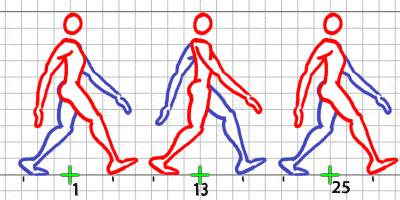
Shiela在书中说她只教六次腿,那组织好手腿之间的时机和节奏就很重要了。
Beat 1: When the right arm extends, the left leg kicks down.
Beat 2: When the right arm catches, the right leg kicks down.
Beat 3: When the right arm is in the diagonal phase, the left leg kicks down.
Beat 4: When the right arm finishes the stroke, the right leg kicks down.
Beat 5: When the right arm recovers, the left leg kicks down.
Beat 6: When the right arm enters the water, the right leg kicks down.
上面是以右手臂为参考,Sheila给出的上下踢腿的配合动作,下次下水时可以按照这个节奏试验下哦!
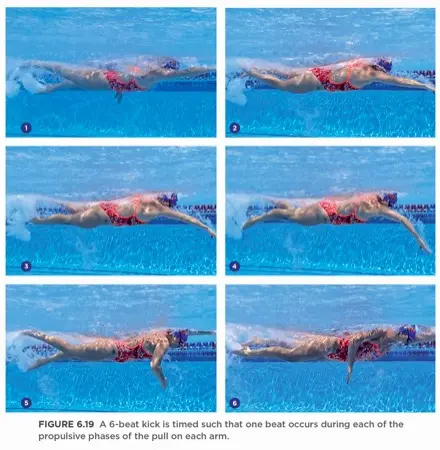 六次腿示范图
六次腿示范图
是的,就像Sheila所描述的一样,一旦你正确掌握了六次腿的节奏,你的腿就快得像跑车的后轮一样飞快地推着你疾驰!
“ If you incorporate a well-timed 6-beat kick into your freestyle stroke you will feel propulsive assistance in the form of rear-wheel drive!”
另外附上打腿的四个步骤:
1.Bend the knee
2.Flex the hip (press the thigh down in the water)
3.Straighten the leg
4.Lift the thigh and lower leg back to the surface”
我编了一个口诀:“一屈二压三绷四抬”,示范如下图所示:
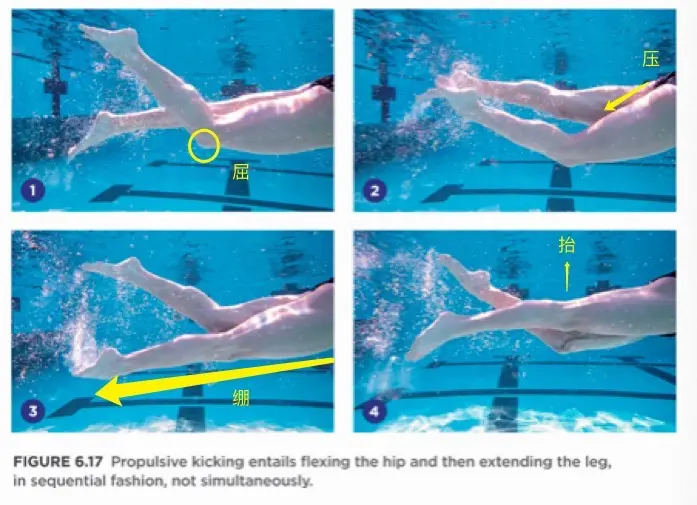
2021/4/14 更新
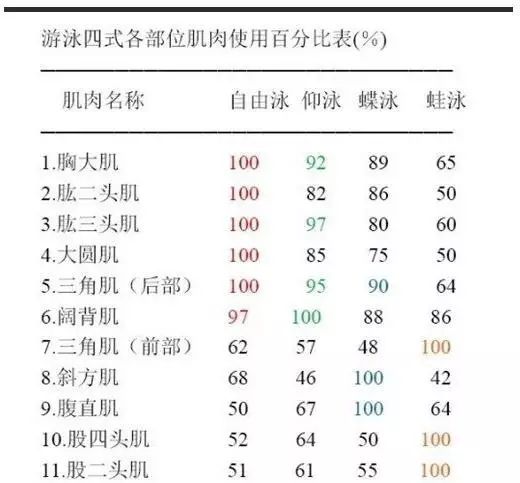
就像进行力量训练前,我们需要知道是哪块肌肉发力一样,游泳也是一样,从上图中我们可以看到在自由泳中有好几块肌肉参与度是100,这个数据对于我们的意义是,他可以比较直观地告诉我们动作是否正确,比如三角肌后部参与度为100,就告诉我们移臂的过程是由肩部带动的,蛙泳中三角肌后部占比100,也告诉我们在划水的时候主要是由三角肌前部带动。
